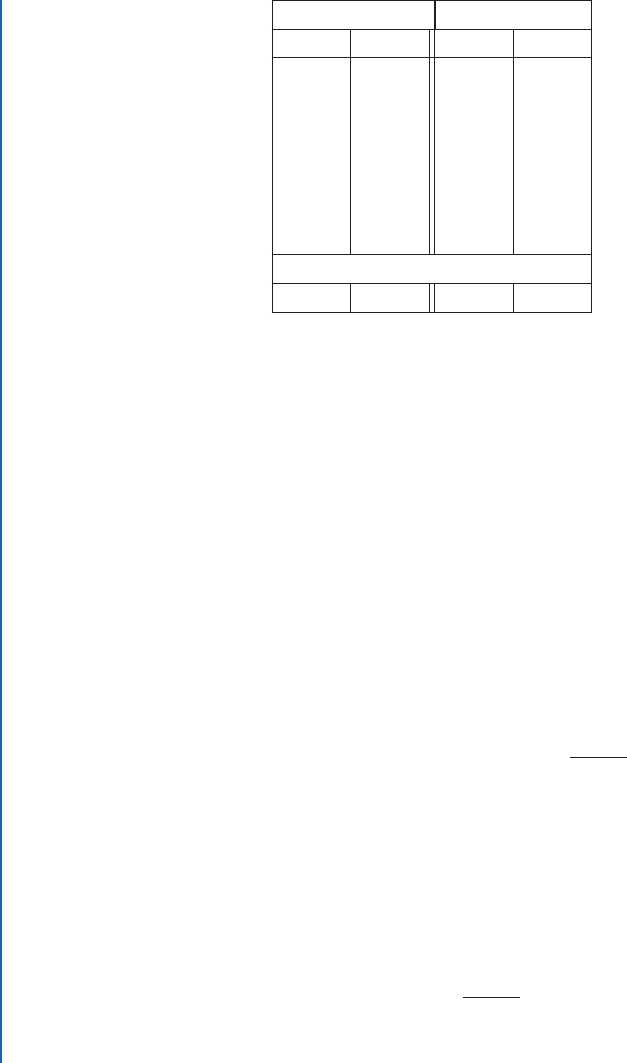
75
C H A P T E R 3
Limits, Derivatives, Rules, and
the Meaning of the Derivative
Traditional calculus courses begin with a detailed formal discussion of limits and continuity. is
book departs from that tradition, with this chapter introducing limits only in an informal fashion
so as to be able to get going with calculus. A formal discussion of limits and continuity appears
in Chapter 6. e agenda for this chapter is to get you on board with a workable operational
definition of limits; use this to give the formal definition of a derivative; develop the rules for
taking derivatives; and end with a discussion of the physical meaning of the derivative.
3.1 LIMITS
Suppose we are given a function definition like:
f .x/ D
x
2
4
x C 2
en, as long as x ¤ 2, we can simplify as follows:
f .x/ D
x
2
4
x C 2
D
.x 2/.x C 2/
.x C 2/
D
.x 2/
.x C 2/
.x C 2/
D x 2
So, this function is a line—as long as x ¤ 2. What happens when x D 2? Technically, the
function doesn’t exist. is is where the notion of a limit comes in handy. If we come up with
a whole string of x values and look where they are going as we approach 2, they all seem to
be going toward minus 4. e key phrase here is seem to be, and the rigorous, precise definition
of this vague phrase is the meat of Chapter 6.
For now, let’s examine a tabulation of the behavior of f .x/ near x D 2.

76 3. LIMITS, DERIVATIVES, RULES, AND THE MEANING OF THE DERIVATIVE
From above From below
x f .x/ x f .x/
-1 -3 -3 -5
-1.5 -3.5 -2.5 -4.5
-1.75 -3.75 2.25 -4.25
-1.8 -3.8 -2.2 -4.2
-1.9 -3.9 -2.1 -4.1
-1.95 -3.95 -2.05 -4.05
-1.99 -3.99 -2.01 -4.01
Heading for:
-2 -4 -2 -4
Notice that this table approaches from above (numbers larger than x D 2) and below (num-
bers smaller than x D 2). In a well-behaved function the approaches from above and below
head for the same place, but there are functions where they don’t. We call these the limit from
above and the limit from below. If they agree, their joint value is the limit of the function. In
this case the limit of the function at x D 2 is 4.
Definition 3.1 We use the following symbols for the limits from above and below and the limit of a
function f .x/ at a point x D c:
lim
x!c
C
f .x/ lim
x
!
c
f .x/ lim
x
!
c
f .x/
Example 3.1 What the tabulated information about f .x/ D
x
2
4
x 2
suggests is that:
lim
x!2
C
f .x/
D 4
lim
x!2
f .x/
D 4
lim
x!2
f .x/
D 4
˙
e problem with the example function f .x/ D
x
2
4
x 2
is that it seems contrived. We will
see shortly that functions with this sort of implausible structure arise naturally when we try
to answer the simple question: What is the tangent line to a function at a point? is is the
3.1. LIMITS 77
central question for this chapter.
Before we get there, we need the rules-of-thumb for taking limits. Suppose we are trying to
compute L such that:
lim
x!c
f .x/
D L
We can follow these rules:
• If either of the limits from above or below don’t exist, then L does not exist.
• If the limits from above and below exist but are not equal, then L does not exist.
• If the limits from above and below exist and are equal, then the limit of the function is
the joint value of the upper and lower limits.
• If the function f .x/ is one that we can just plug into and is continuous, i.e., one that
can be drawn without lifting our pencil (this is another Chapter 6 issue), then we can
compute the limit by just plugging in.
• If the function can be turned into a well-behaved function by algebra that works every-
where but x D c (like canceling .x C 2/ in our example), then plugging into the modified
function computes the limit.
Example 3.2 Compute:
lim
x!2
x
3
C x
2
C x C 1
Solution:
Polynomials are the most well-behaved functions possible; we can always take their limits by
just plugging into them. So
lim
x!2
x
3
C x
2
C x C 1 D 8 C 4 C 2 C 1 D 15
˙
..................Content has been hidden....................
You can't read the all page of ebook, please click here login for view all page.
